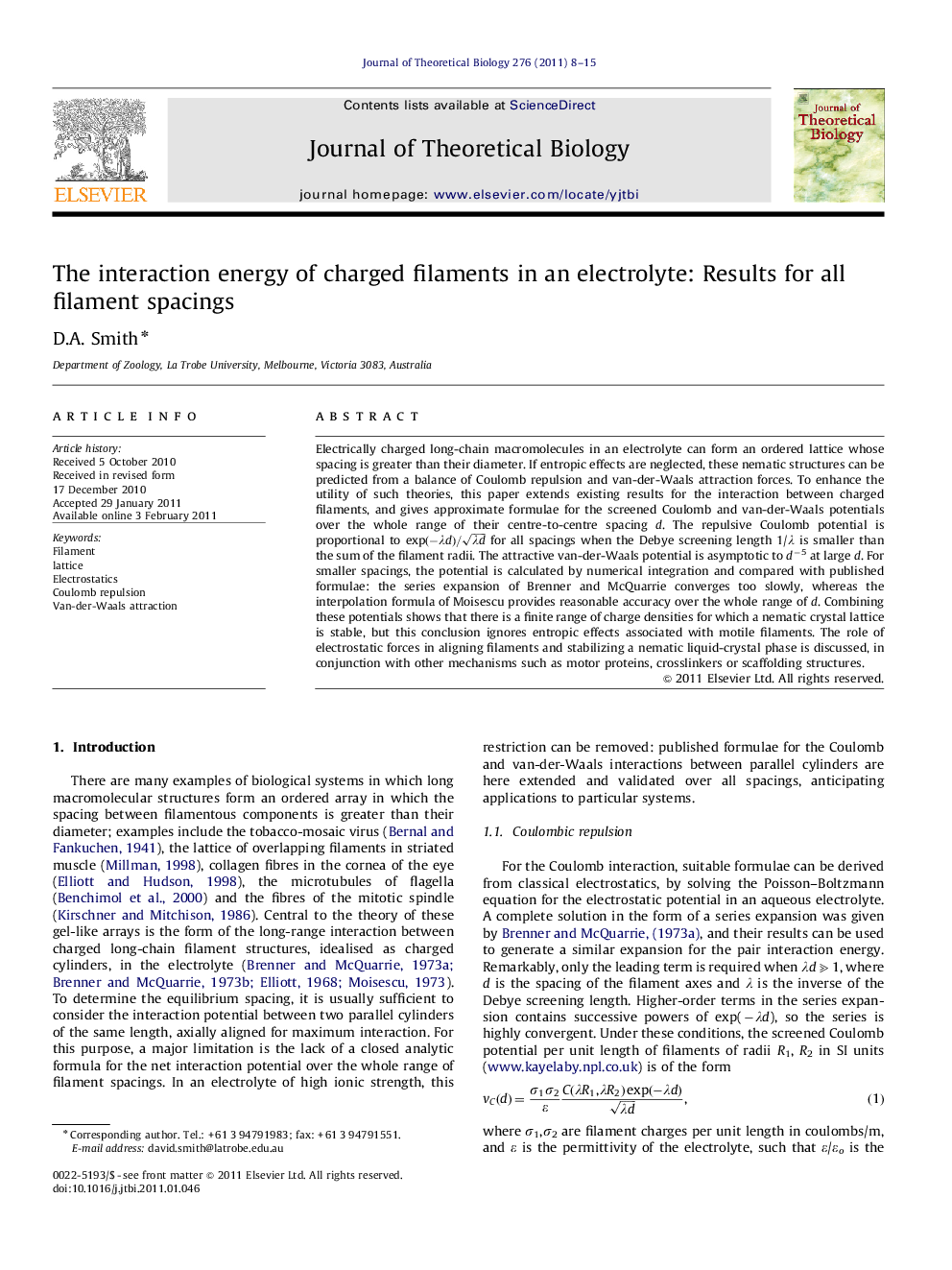| Article ID | Journal | Published Year | Pages | File Type |
|---|---|---|---|---|
| 4497170 | Journal of Theoretical Biology | 2011 | 8 Pages |
Abstract
Electrically charged long-chain macromolecules in an electrolyte can form an ordered lattice whose spacing is greater than their diameter. If entropic effects are neglected, these nematic structures can be predicted from a balance of Coulomb repulsion and van-der-Waals attraction forces. To enhance the utility of such theories, this paper extends existing results for the interaction between charged filaments, and gives approximate formulae for the screened Coulomb and van-der-Waals potentials over the whole range of their centre-to-centre spacing d. The repulsive Coulomb potential is proportional to exp(âλd)/λd for all spacings when the Debye screening length 1/λ is smaller than the sum of the filament radii. The attractive van-der-Waals potential is asymptotic to dâ5 at large d. For smaller spacings, the potential is calculated by numerical integration and compared with published formulae: the series expansion of Brenner and McQuarrie converges too slowly, whereas the interpolation formula of Moisescu provides reasonable accuracy over the whole range of d. Combining these potentials shows that there is a finite range of charge densities for which a nematic crystal lattice is stable, but this conclusion ignores entropic effects associated with motile filaments. The role of electrostatic forces in aligning filaments and stabilizing a nematic liquid-crystal phase is discussed, in conjunction with other mechanisms such as motor proteins, crosslinkers or scaffolding structures.
Related Topics
Life Sciences
Agricultural and Biological Sciences
Agricultural and Biological Sciences (General)
Authors
D.A. Smith,
